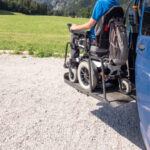In the blink of an eye, a routine drive can turn into a life-altering event. Auto accidents, unfortunately, are a harsh reality that many of us face. Beyond the visible damage to vehicles, auto accident injuries can have profound effects on our bodies. This article is your “crash course” into the intricate science behind these injuries, shedding light on the mechanisms, types, and potential long-term consequences.
The Mechanics of an Auto Accident
When two vehicles collide, the physics governing the impact can be incredibly complex. It’s not just about speed; it’s about momentum, force, and angles. Understanding these fundamental principles helps us comprehend why injuries occur.
Types of Auto Accident Injuries
1. Whiplash
Whiplash is perhaps the most common auto accident injury. It occurs when the head jerks forward and then backward suddenly. The neck’s soft tissues can become strained or damaged, resulting in pain, stiffness, and headaches.
2. Fractures and Dislocations
The immense force during a collision can lead to bone fractures or joint dislocations. These injuries often require immediate medical attention and can have lasting consequences.
3. Concussions and Brain Injuries
Even with seatbelts and airbags, the head can still experience significant trauma. Concussions and brain injuries range from mild to severe, affecting cognitive function and quality of life.
4. Spinal Cord Injuries
Auto accidents can damage the spinal cord, leading to paralysis or permanent disability. These injuries are often devastating and life-changing.

The Ripple Effect on the Body
Auto accident injuries rarely stay isolated. They can trigger a cascade of physical and emotional challenges. Understanding this domino effect is crucial for comprehensive care and recovery.
Emotional Impact
The psychological toll of an auto accident should not be underestimated. It’s common for survivors to experience anxiety, depression, or even post-traumatic stress disorder (PTSD).
Long-Term Complications
Some injuries, like traumatic brain injuries or spinal cord damage, can result in lifelong complications. Adjusting to these changes requires a supportive network and specialized medical care.
Conclusion
Auto accident injuries are not just bruises and scrapes; they are intricate medical conditions influenced by physics, biology, and psychology. By understanding the science behind these injuries, we can better appreciate the importance of defensive driving and safety measures. Additionally, this knowledge empowers survivors and their families to navigate the complex journey of recovery with resilience and hope. In our next article, we will delve deeper into prevention strategies and the latest advancements in treatment for auto accident injuries. Stay tuned for more insightful information on this crucial topic.











